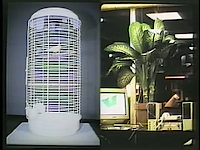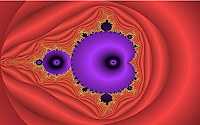Mathematician Benoit Mandelbrot coined the term fractal
in 1975 to describe a mathematics of self-similarity and recursion which can generate complex structures from
simple premises (such as the Mandelbrot set, pictured at right). While fractal mathematics is usually
deterministic (i.e. the same generative process will always produce identical
results), fractal structures are nonetheless chaotic, complex, and
unpredictable. In fact, many computer-based random number generators are based
on fractal algorithms.
As Mandelbrot noted in his seminal 1982 book, The
Fractal Geometry of Nature, fractals are not merely mathematical exercises
that sometimes create pretty images; they are closely connected to structures
of nature. The self-similar
geometry of snowflakes is modeled by Koch’s fractal curves, and the
self-similar, branching growth of plants is captured by the recursive
iterations of Lindenmayer systems. Other fractals, such as the Mandelbrot set,
connect more abstractly to nature in their dependence on the self-similarity
that is so prevalent in the natural world.
Numerous composers have used fractals to generate
musical material, but most have merely grabbed successive rows of pixels from
an image of a Mandelbrot set and mapped their values onto pitch and rhythmic
data.
Nick Didkovsky, a New York composer, software
designer, and electric guitarist who creates music for concert performances,
club events, and interaction over the Internet, developed a more sophisticated
representation of fractal processes for his MandelMusic web site. Didkovsky
opens up the work to user interaction and provides a framework through which
other composers can extend his ideas. Rather than tediously sonifying
successive pixels, the web-based software lets users choose a starting point
and then listen and watch as the Mandelbrot equation is recursively applied.
And rather than creating music from a simple, fixed mapping, Didkovsky has
invited other composers to create their own plug-ins to sonify each point as it
is visited. To date, ten composers have contributed sixteen plugins exploring a
variety of musical techniques.
Visit the site.


